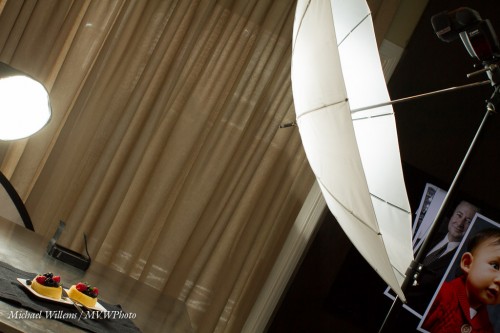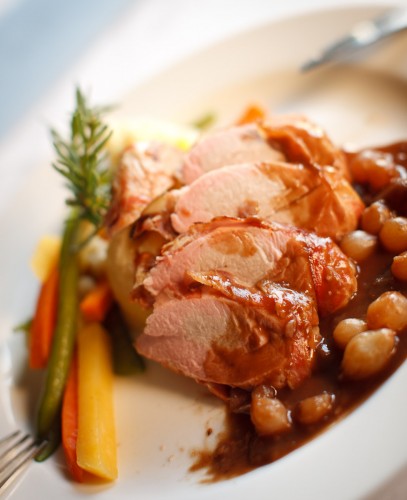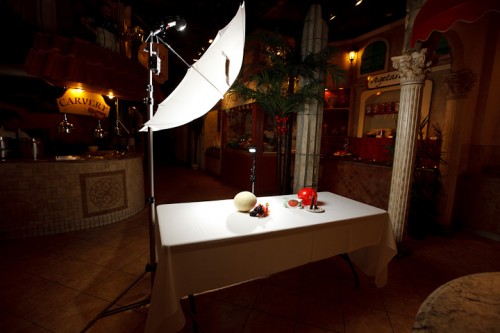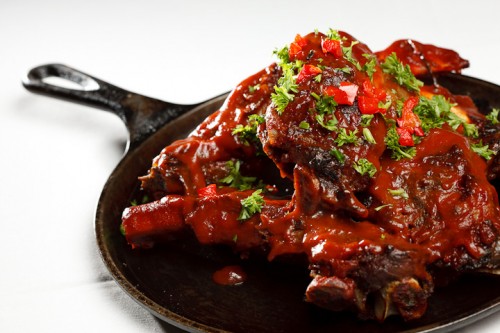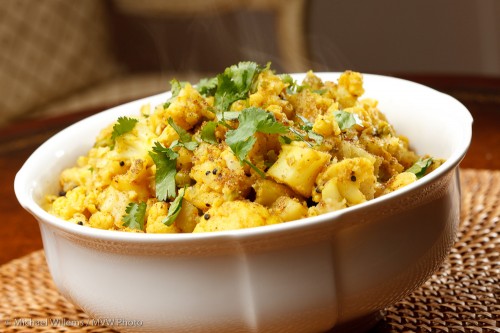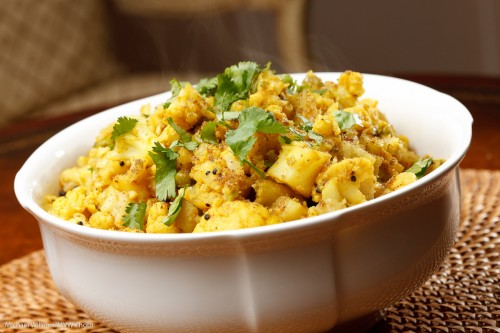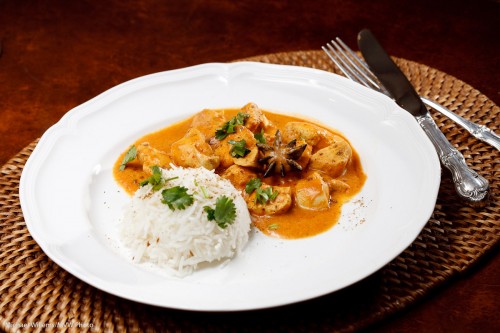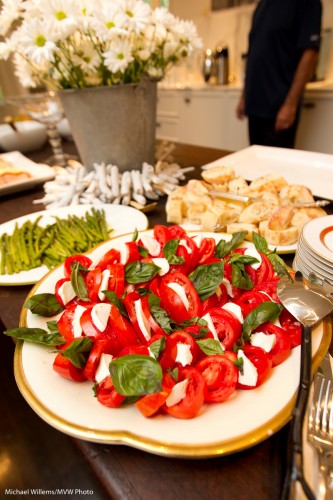Since I am hungry, I think a quick Food Photography recipe is in order. Here’s food, from the other day:
My way of shooting food:
- I shoot from a 40 degree angle, roughly.
- I use selective focus
- I use one soft light, and a back light. This can be natural light, or flash.
- I crop tightly.
- I like to make it look natural – with cutlery, etc.
- I arrange things as carefully as I can, and clean plates etc. after arranging.
If you use flash, here’s what you need: a table, the food, a flash with an umbrella above the food, and a flash behind the food aiming at you, possibly with some kind of modifier too, to provide what in portraits I would call “shampooy goodness”, and in food “yummy goodness”. That is all (well – that and the camera).
That’s what it looked like the other day, when I helped a student do some food shots.
And the shots looked like the one above, and like this:
Student Rhonda was kind enough to leave me the fruit cakes, and I ate them. Yum.


